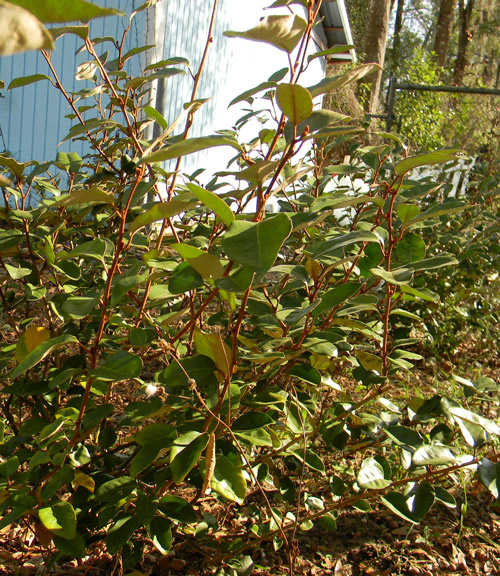On an older post about silverthorn, I recently received this comment:
“Please don’t plant this plant: it’s a terrible invasive exotic that’s hard to control or remove once it gets going. If you grow it under trees like the large live oaks in my yard which have low-growing limbs it will climb up into the branches and it’s very hard to remove because the thorns get snagged in the small branches and it’s like they’re knotted together. How about some nice native blueberries if you want a fruiting shrub? Or wax myrtle if you want a hedge?”
But… I love them! I love them so much I cannot let go!
“Invasive” means easy-to-grow, and often means a plant is a pioneer species, which is exactly what we want for food forest systems. Silverthorn is a Swiss Army knife food forest plant! (I love Swiss Army Knives – I want to buy one of these, but I already have a dozen pocketknives. It’s sitting in my cart right now… must… resist…)
Like other members of the Eleagnus genus, silverthorn fixes nitrogen. Though the commenter does have two nice suggestions for plants that may fill in the role of silverthorn – blueberries and wax myrtle – they don’t fill in ALL the wonderful attributes tied up in this one plant.
Silverthorn functions as a source of fast-growing biomass, a soil-improver, an excellent hedge plant, a livestock barrier and an edible.
Bayberry is a useful hedge species, providing food for birds and a source of candle wax, but it lacks in some of the attributes of silverthorn. And blueberries, though beautiful and edible, are harder to grow than silverthorn and do not grow into as effective a barrier.
For many people, rampant growth in a species is looked upon as a bad thing. I see it as very useful, especially in areas lacking enough organic matter. The prunings of silverthorn can be chopped and dropped around fruit trees to feed the soil or they can be turned into biochar and used to improve garden plots.
A Valentine’s Day List of Invasives
Other “invasive” species I love include:
Dioscorea alata (The Greater Yam)
Leucaena leucocephala (Lead tree)
Coccinea grandis (Ivy Gourd)
Elaeagnus umbellata (Autumn Olive)
Albizia julibrissins (Mimosa tree)
Robinia pseudoacacia (Black Locust)
Paulownia tomentosa (Empress Tree)
I am the wrong person to contact about growing potentially invasive species, as I find many of them very useful and exciting to grow. Fast and productive plants are what I want.


2 comments
I find great amusement in this post, because we were discussing the potential use of silverthorn for a fast growing hedgerow on our property just a couple days ago.
Perfect timing. It’s really a great plant.
Comments are closed.